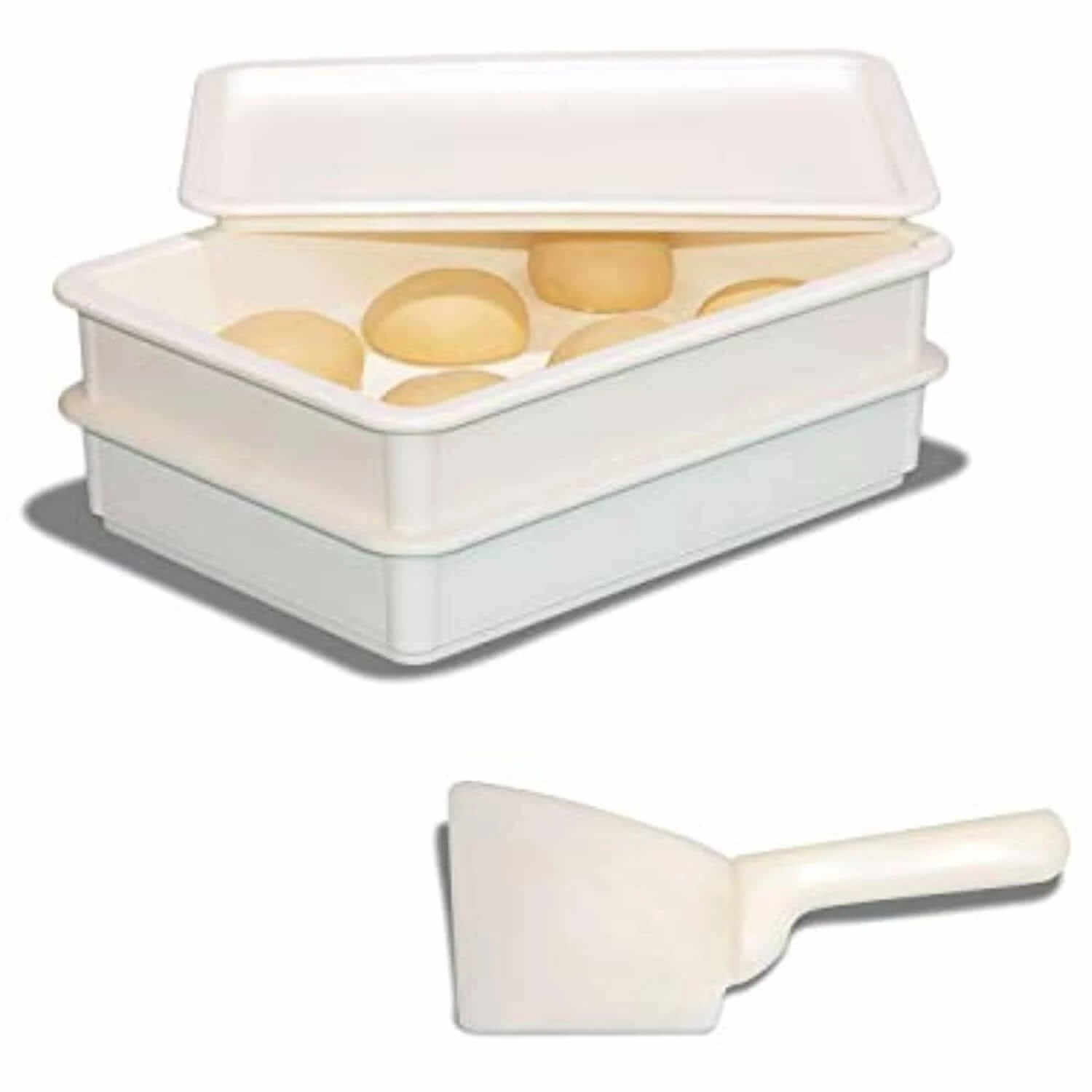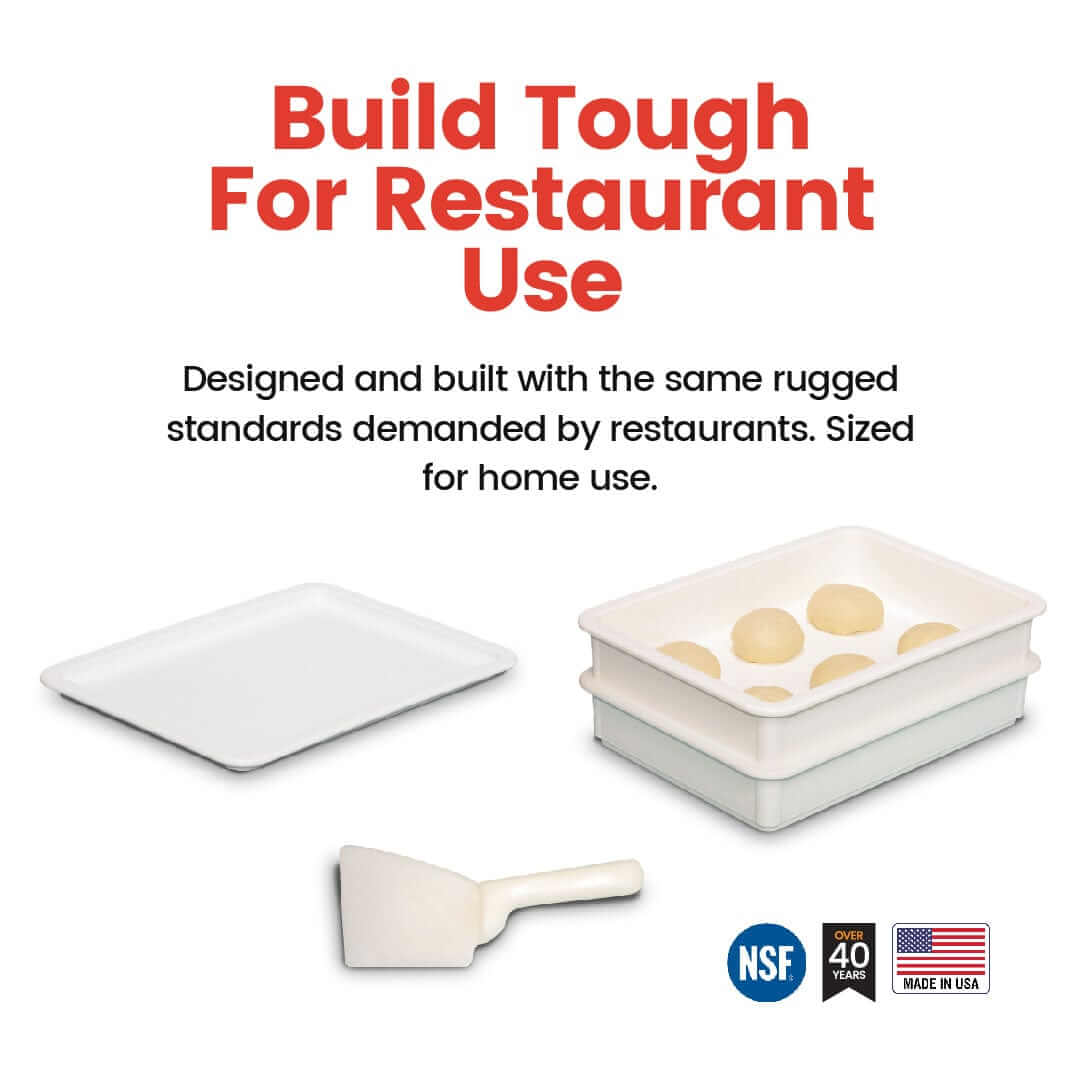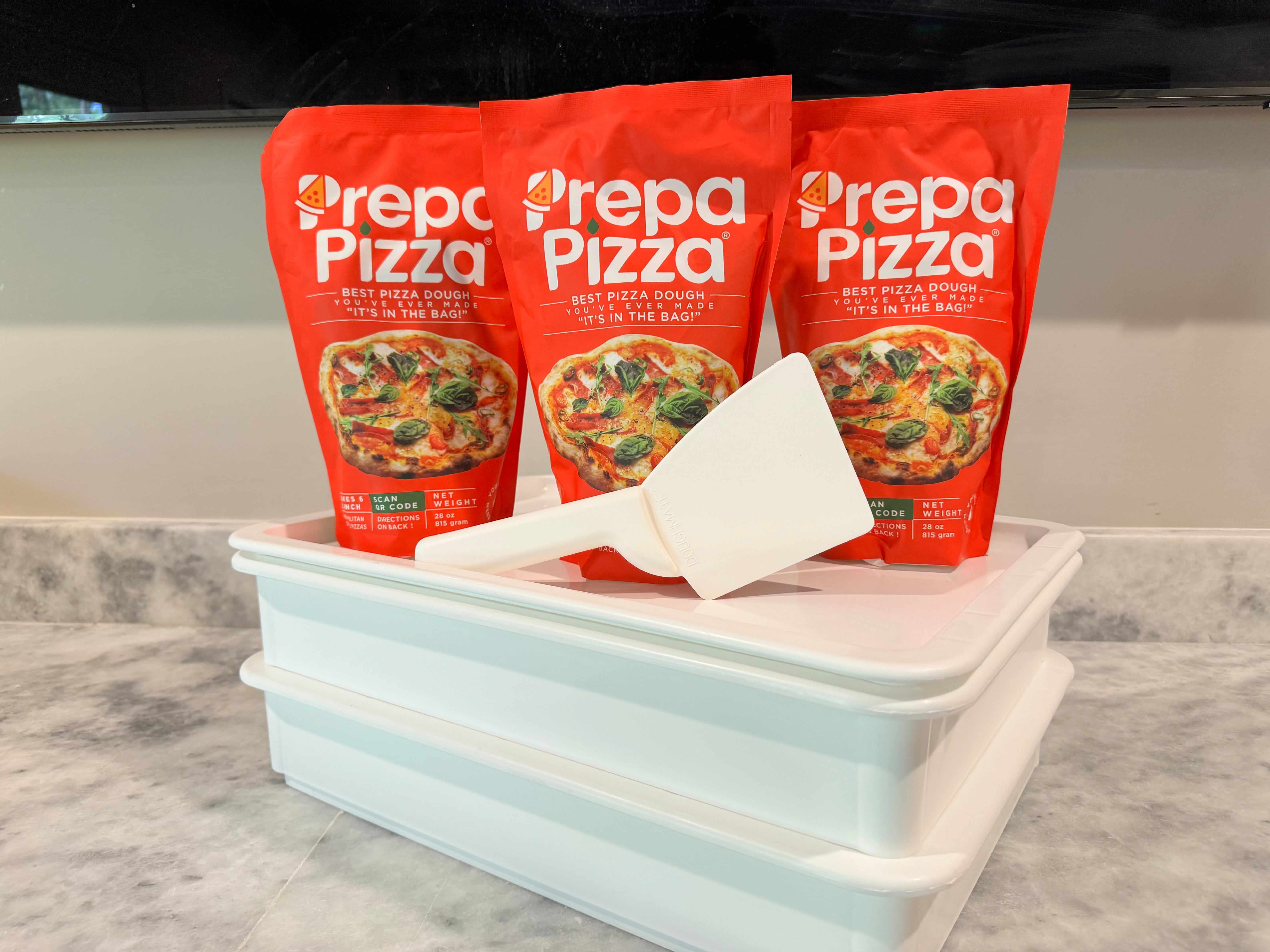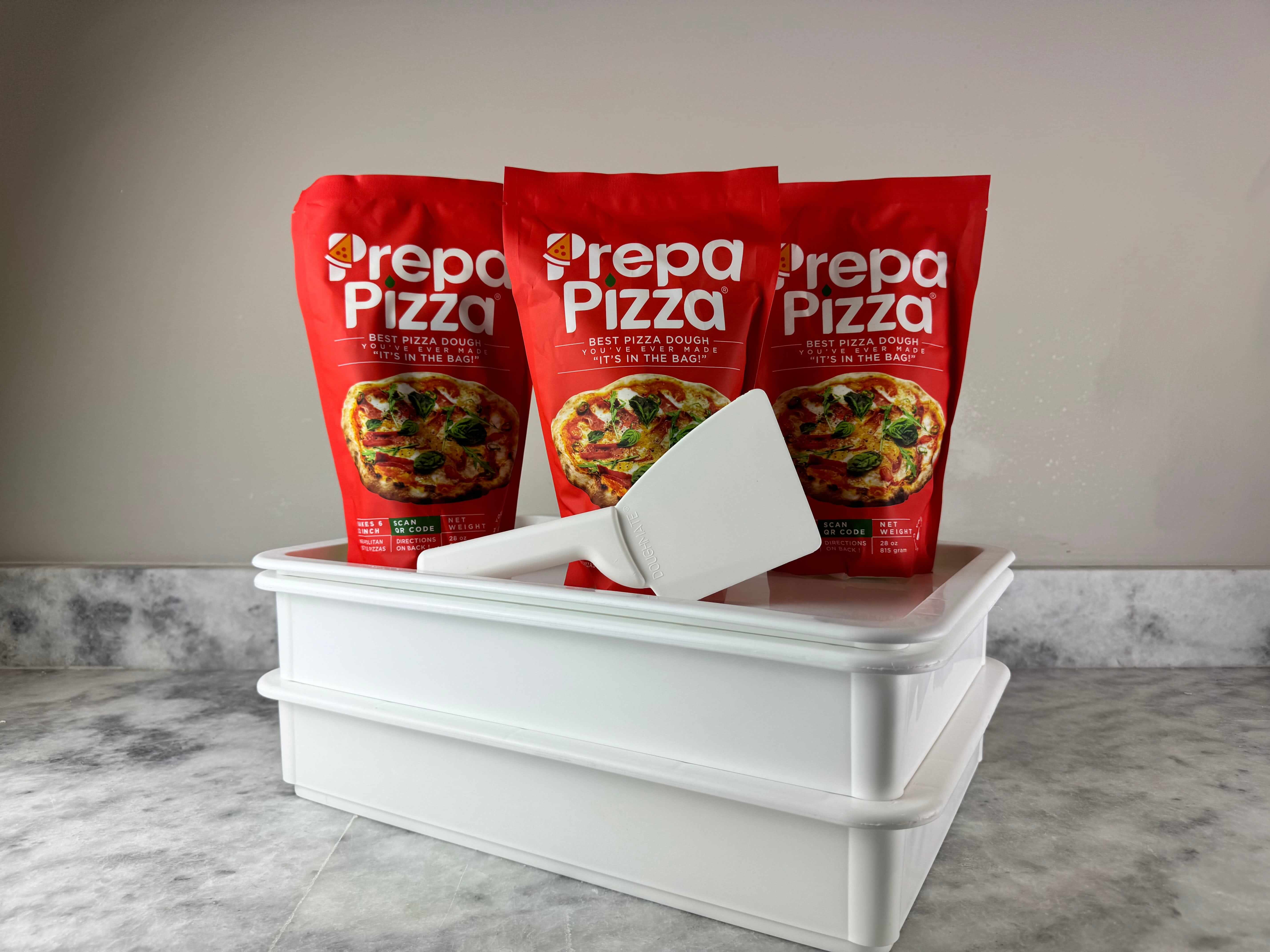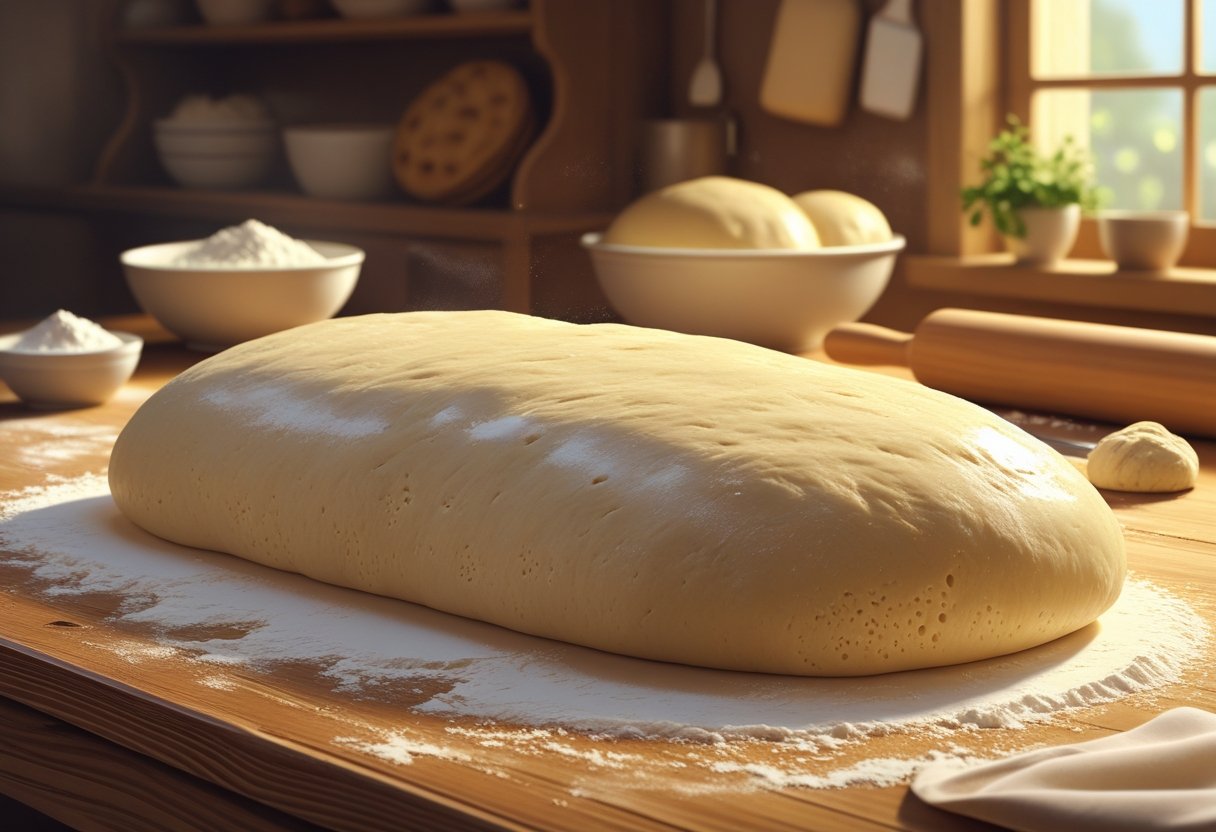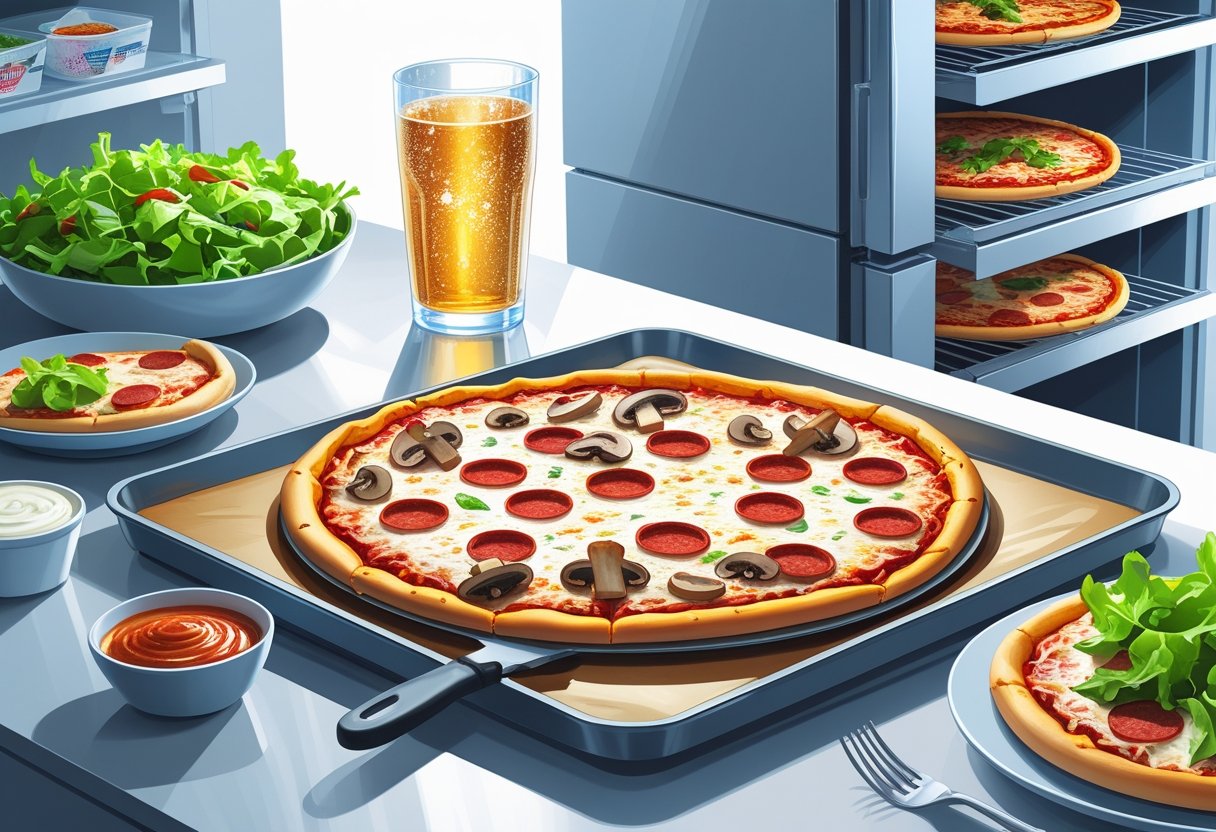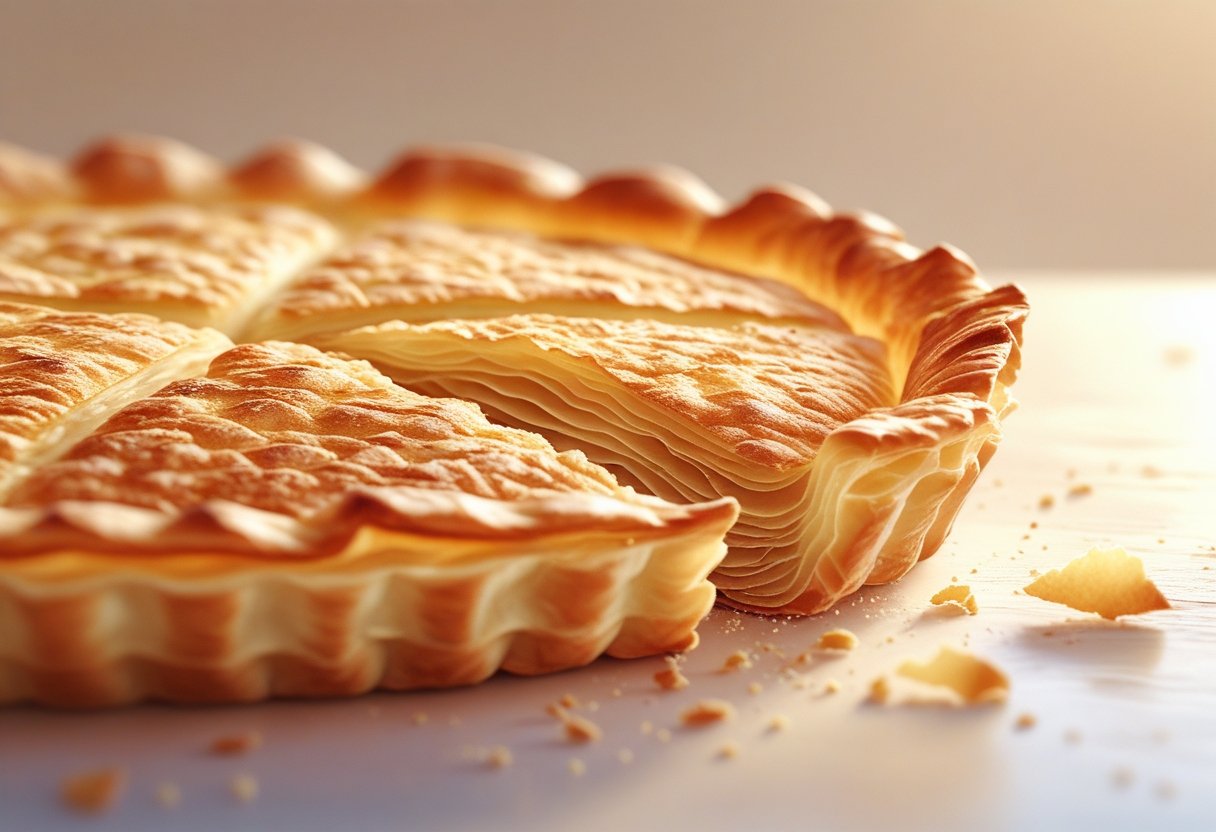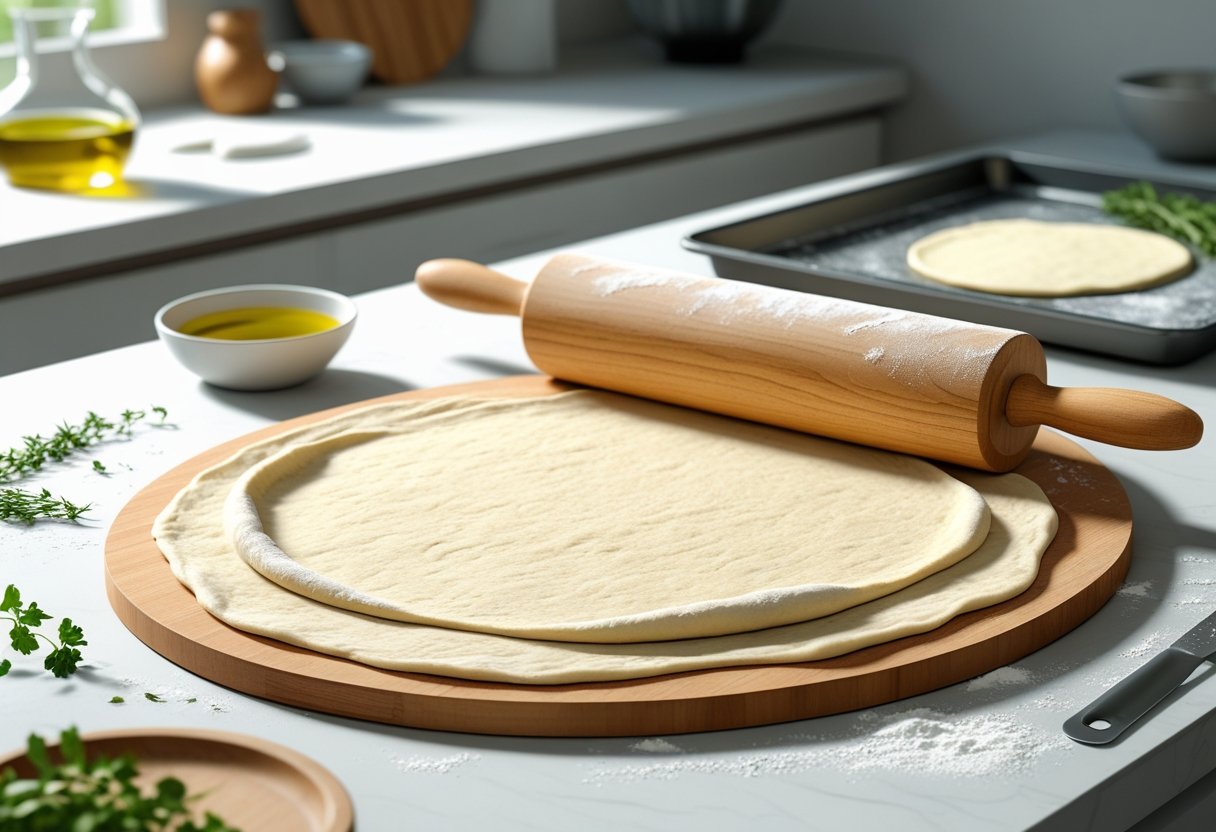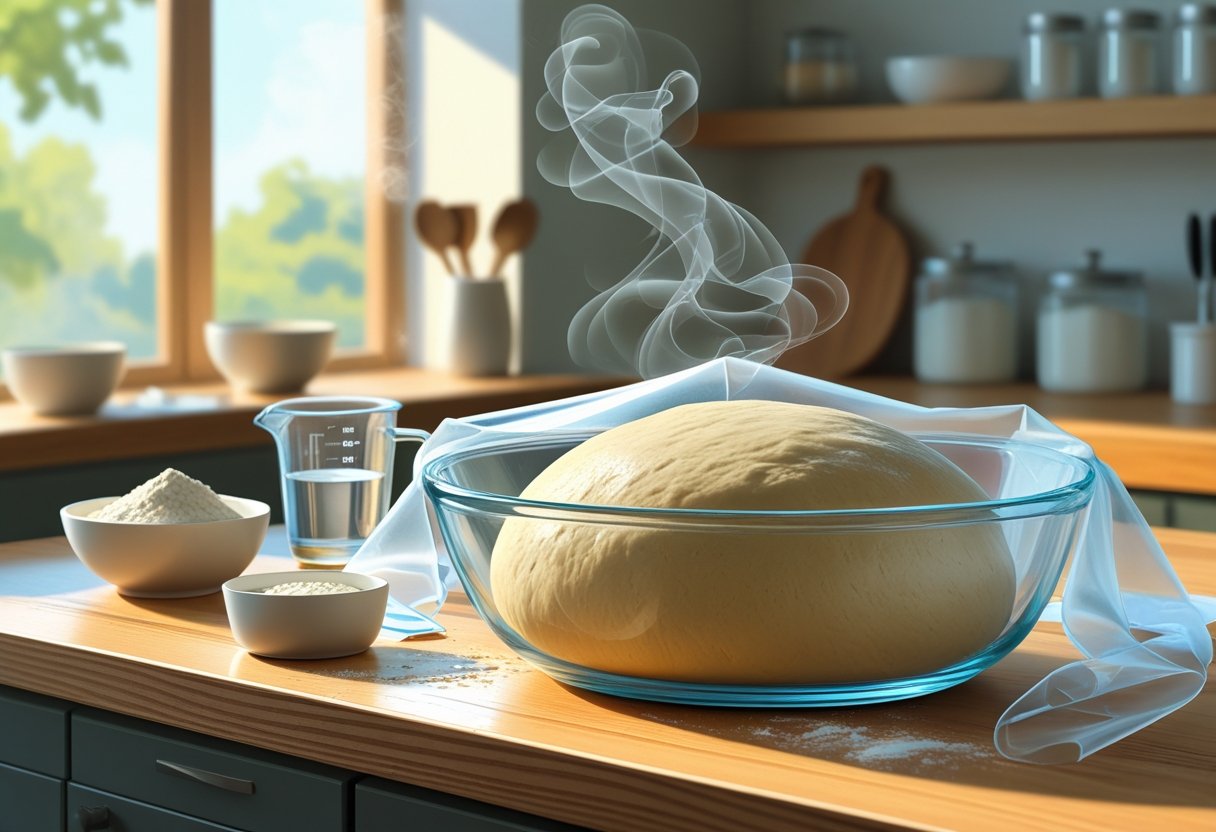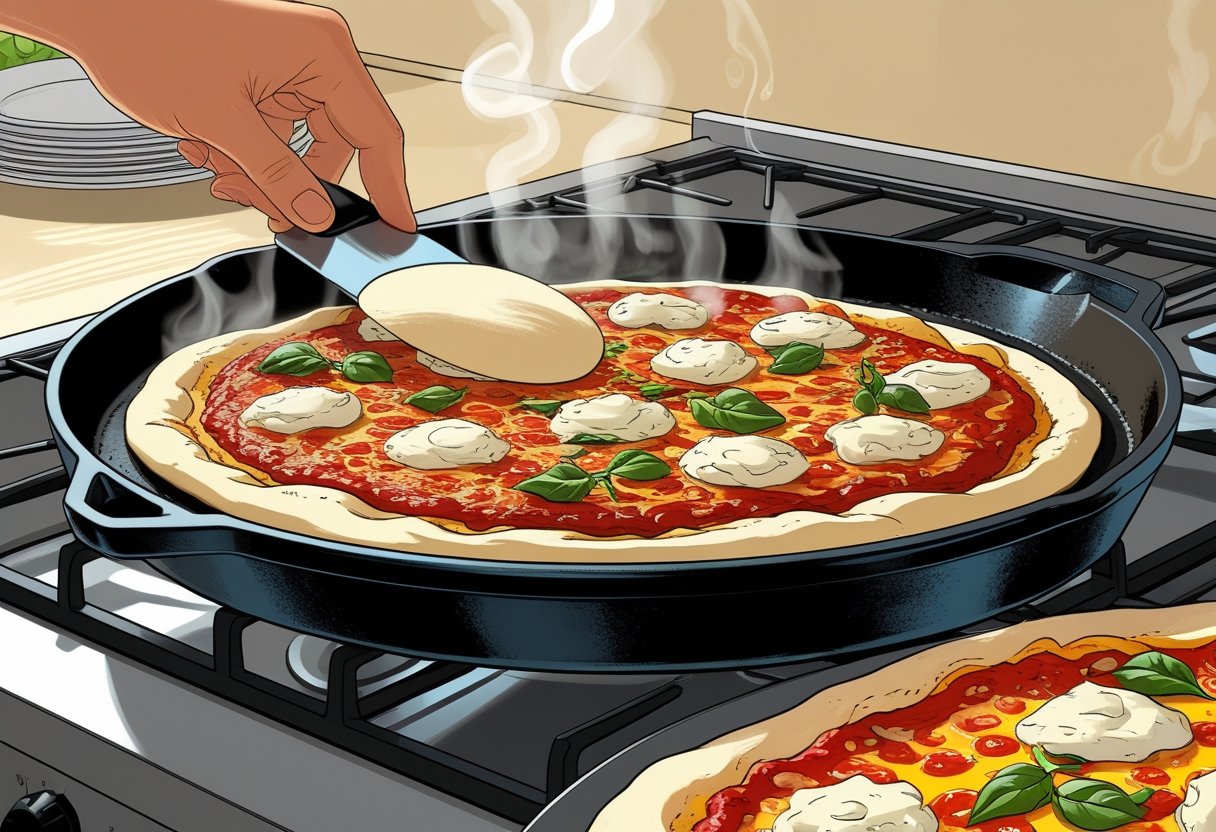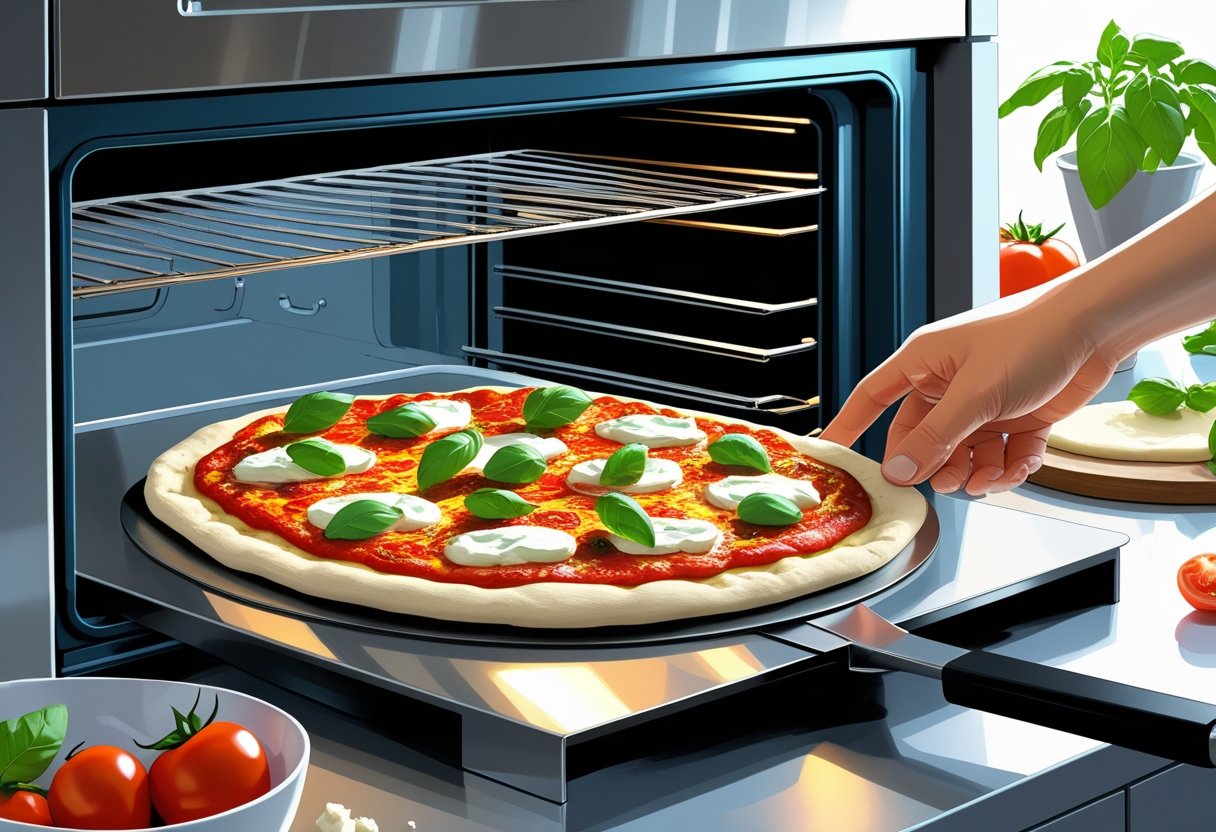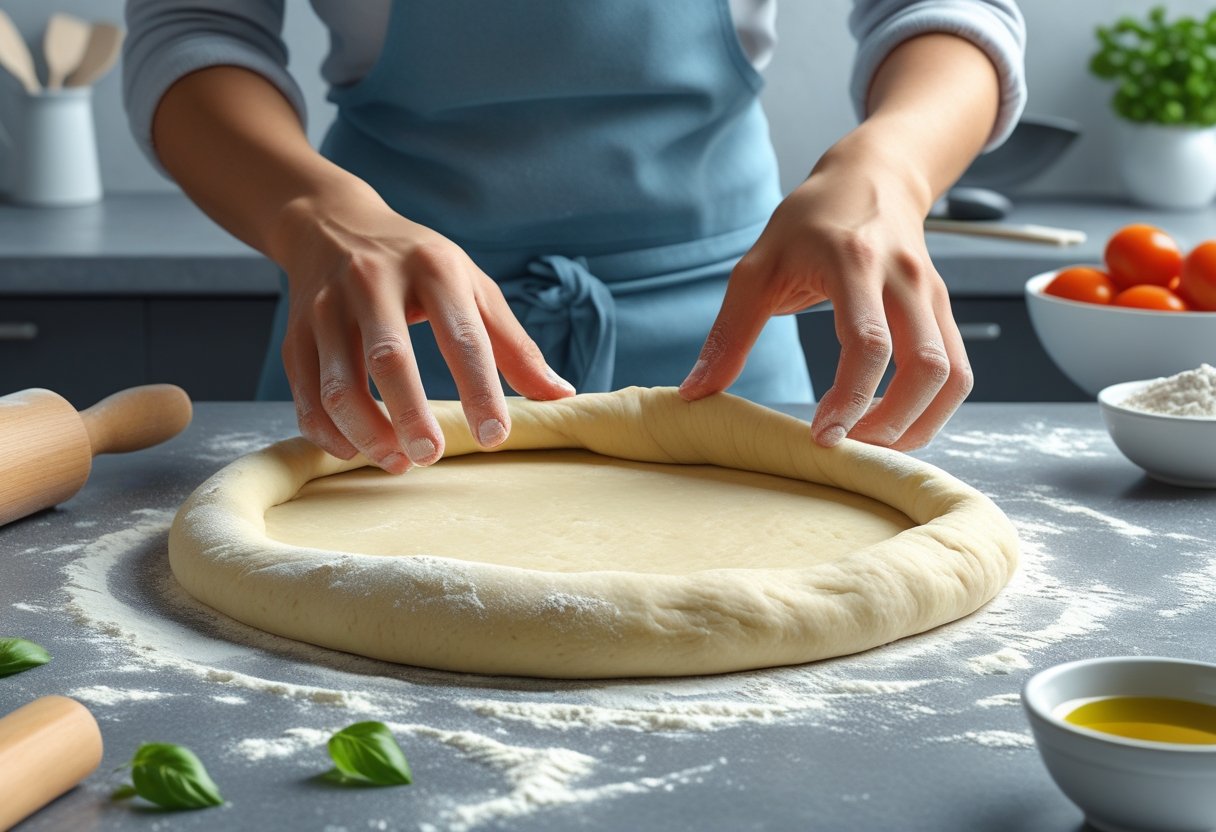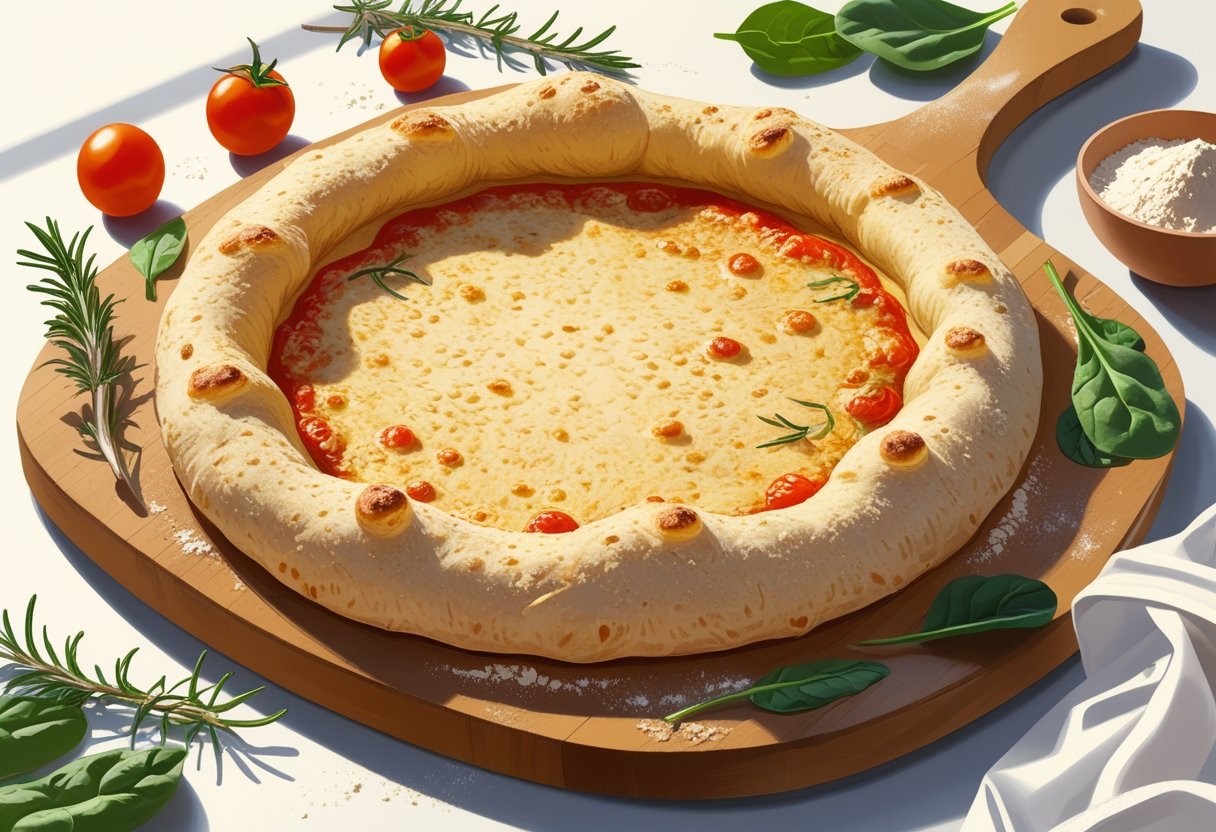
Healthy Pizza Crust: A Delicious Alternative for Guilt-Free Dining
If you think healthy eating means giving up on pizza, it’s time to think again. With the right ingredients, you can create a pizza crust that is not only nutritious but also delicious. Using high-quality premade dough from Prepa Pizza allows you to whip up a healthy pizza in no time. Our dough is crafted with premium ingredients, making it perfect for those who want to enjoy pizza without compromising on health.
Healthy pizza crusts can come in various forms, including options made from vegetables, whole grains, or low-carb ingredients. You’ll discover that alternatives like Greek yogurt or cottage cheese can create a satisfying base for your favorite toppings. Embracing these options not only enhances the nutritional value but also introduces new flavors to your meals.
With Prepa Pizza’s premade dough, you skip the hassle of making dough from scratch, allowing you to focus on what really matters: creating a tasty and healthy pizza. Explore creative toppings and inventive crust options, and turn your pizza night into a wholesome and enjoyable experience.
What Makes a Pizza Crust Healthy?
When choosing a pizza crust, you want to prioritize ingredients that enhance nutritional value without sacrificing flavor. Healthy pizza crusts often include whole grains, healthy fats, and reduced sodium levels, making them better options for a balanced diet. Using high-quality ingredients like those found in Prepa Pizza’s premade dough can elevate your pizza experience.
Nutritional Benefits of a Healthy Pizza Crust
A healthy pizza crust can offer several nutritional advantages. For instance, using whole wheat flour instead of white flour increases dietary fiber, which aids in digestion and promotes satiety. Whole grains have additional vitamins and minerals that contribute to overall health.
Another benefit comes from incorporating ingredients like olive oil. This heart-healthy fat provides flavor while offering monounsaturated fats which may help reduce inflammation. Furthermore, using less salt in your crust helps control sodium intake, making your meal heart-healthier.
Prepa Pizza’s premade dough not only simplifies the pizza-making process but also ensures you use high-quality ingredients crafted for health-conscious individuals. You can check out their offerings here.
Comparing Traditional and Healthy Crusts
Traditional pizza crusts are often made from refined white flour and can contain higher amounts of sugar and salt. This can lead to spikes in blood sugar levels and contribute to various health issues over time. In contrast, healthy crusts typically feature whole grains and fewer additives, allowing for a more nutrient-dense option.
By using a whole wheat base in your crust, you can improve fiber content, leading to longer-lasting energy. Healthier crusts may also utilize alternative ingredients, such as cottage cheese or Greek yogurt, to increase protein, which enhances muscle recovery and keeps you feeling full longer.
Common Myths About Healthy Pizza Crust
There are various misconceptions about what makes a pizza crust healthy. One common myth is that all gluten-free options are inherently healthier. While gluten-free may be beneficial for those with sensitivities, many gluten-free crusts use refined flours that lack the nutritional benefits of whole grains.
Another myth is that all healthy crusts are bland or tasteless. In fact, using quality ingredients, like those from Prepa Pizza, can enhance flavor without compromising health. Focus on incorporating spices and herbs in your crust to add taste while keeping it nutritious.
Key Ingredients for Healthy Pizza Crust
Creating a healthy pizza crust begins with selecting the right ingredients. Understanding the benefits of flour types, flavors to enhance your dough, and add-ins will elevate your crust. High-quality choices can make a significant difference in both taste and nutrition. Consider using Prepa Pizza's premade dough for convenience without sacrificing quality.
Whole Wheat Flour and Its Benefits
Whole wheat flour serves as an excellent base for healthy pizza crust. Unlike all-purpose flour, it retains the bran and germ, providing more fiber and nutrients. Fiber supports healthy digestion and helps keep you full longer. Whole wheat flour also has a nuttier flavor, enhancing the crust's taste.
Switching to whole wheat flour can improve the nutritional profile of your pizza. It typically has a lower glycemic index, which means it can help stabilize blood sugar levels. If you're looking to maximize the benefits, consider blending whole wheat flour with other healthy ingredients.
Alternative Flours and Add-Ins
For those seeking alternatives to traditional flours, several options can enhance your pizza crust. Almond flour, for example, is gluten-free and adds a slight sweetness. Cauliflower crusts are another popular choice, providing a unique flavor and lower carbohydrate content. You can also use coconut flour for a different texture and taste.
Incorporating add-ins like honey can improve browning and flavor. Honey acts as a natural sweetener and can help maintain moisture in the dough. Experimenting with different flour combinations allows you to find the perfect balance for your healthy pizza crust.
Creating Flavor with Salt and Olive Oil
Seasoning your pizza dough is crucial for enhancing flavor. Salt not only elevates taste but also strengthens gluten, contributing to a better structure. Using the right amount of salt can highlight the other ingredients without overpowering the dish.
Olive oil also plays a significant role. It adds richness and helps achieve a golden crust. Incorporating extra-virgin olive oil introduces healthy fats and antioxidants into your recipe. The combination of salt and olive oil will give your pizza crust a delightful flavor profile that complements any topping.
Always remember that using quality ingredients, like those found in Prepa Pizza’s premade dough, assures a superior product that can savor your pizza experience.
How to Make Healthy Pizza Crust at Home
Creating a healthy pizza crust at home is both simple and rewarding. With the right ingredients and techniques, you can whip up a delicious base that satisfies your cravings while keeping your nutrition in check. Using Prepa Pizza's premade dough can streamline the process and ensure you have a restaurant-quality foundation. You can find the dough here.
Step-by-Step Instructions
-
Ingredients: Gather your ingredients. If you opt for Prepa Pizza’s premade dough, you’ll only need to preheat your oven and prepare your toppings. If making dough from scratch, you’ll need whole wheat flour, Greek yogurt, baking powder, and salt.
-
Mix the Dough: If making from scratch, combine the ingredients in a bowl until a dough forms. Knead it for a few minutes until smooth.
-
Roll Out the Dough: Dust your work surface with a little flour. Roll out the dough to your desired thickness, usually about 1/4 inch.
-
Prepare for Baking: Place the rolled-out dough onto a sheet of parchment paper. This helps prevent sticking and makes for easier transfers to the oven.
-
Pre-Bake (if needed): For a crispier crust, pre-bake the rolled dough for about 5-7 minutes at 475°F before adding toppings.
Tips for Perfect Texture and Taste
-
Flour Type: Whole wheat flour adds fiber and nutrition. Alternatively, you can use gluten-free flour if you have dietary restrictions.
-
Dough Thickness: Rolling the dough thinner results in a crispier crust, while thicker dough provides a chewier texture.
-
Use Parchment Paper: Always use parchment paper for baking; it prevents the crust from sticking and makes clean-up easier.
-
Flavor Enhancements: Add herbs like dried oregano or garlic powder directly into the dough for an extra flavor boost.
-
Proper Cooling: If you want a crunchy base, let the crust cool slightly on a wire rack to prevent it from steaming and becoming soggy.
Common Mistakes and How to Avoid Them
-
Not Preheating the Oven: Always preheat your oven to the right temperature. A hot oven is crucial for a crispy crust.
-
Too Much Moisture: Avoid adding excessive sauce or wet toppings before baking. This can make the crust soggy.
-
Ignoring Kneading: If making your dough, knead thoroughly to develop gluten, which helps the dough rise and become chewy.
-
Overcooking or Undercooking: Keep an eye on your pizza while baking. Undercooked dough will be doughy, while overcooking can burn the edges.
-
Skimping on Seasoning: Don’t forget to season the crust itself. A sprinkle of salt can significantly enhance the flavor.
By following these guidelines, you can create a healthy pizza crust that matches your preferences perfectly.
Popular Healthy Pizza Crust Variations
When seeking healthier pizza options, consider various crust alternatives that maintain flavor and nutrition. Each variation offers unique benefits, allowing you to tailor your pizza experience to your dietary preferences. Utilizing Prepa Pizza's premade dough ensures a quality base for any of these healthy crust options.
Whole Wheat Pizza Crust
Whole wheat pizza crust is a nutritious alternative that retains fiber and essential nutrients compared to traditional crusts. It contains whole grain flour, which promotes better digestion and sustained energy.
Using whole wheat flour can also enhance the flavor profile, providing a hearty taste that complements various toppings. Pair it with fresh vegetables and lean proteins for a balanced meal. For added convenience, consider using Prepa Pizza's premade dough designed with health in mind.
Thin Pizza Crust Options
Thin pizza crusts are ideal for those seeking a lighter meal or wishing to reduce carbohydrate intake. By opting for a thin crust, you can enjoy your favorite toppings without the heaviness of a thick base.
There are numerous recipes for thin crust, including those made from cauliflower or almond flour, which offer additional nutritional benefits. These alternatives often deliver a crispy texture and can be highly satisfying. Prepa Pizza also offers thin crust variations that are easy to prepare and delicious.
Honey-Infused Crusts
Adding honey to your pizza crust creates a subtle sweetness that balances savory toppings perfectly. This variation not only enhances flavor but also contributes natural sugars that provide quick energy.
Honey-infused crusts can be made using whole wheat or traditional dough, making them versatile for various dietary needs. The sweetness of honey pairs well with ingredients like goat cheese or balsamic glaze, elevating your pizza to a gourmet level. For convenience, consider starting with Prepa Pizza's premade dough, which can easily be adapted to include honey in the crust.
Baking and Serving Healthy Pizza
Creating delicious and healthy pizza starts with choosing the right tools and ingredients. Using quality premade dough, like that offered by Prepa Pizza, ensures a fantastic base for your pizza. Explore the best bakeware, the benefits of a pizza stone, and how to elevate your pizza with thoughtful toppings.
Choosing the Right Bakeware
Selecting appropriate bakeware significantly affects your pizza’s texture and cooking time. For thin crust pizzas, a metal baking sheet works well. For a chewier crust, opt for stoneware or cast iron, which retain heat better.
Don’t forget to line your bakeware with parchment paper. This prevents sticking and makes cleanup easier. If you desire a crispy crust, use perforated pizza pans that allow steam to escape.
The size of your bakeware should complement your dough. Ensure that your premade dough from Prepa Pizza fits well within your chosen pan, allowing room for rising.
Using a Pizza Stone for Better Results
A pizza stone is a game-changer for achieving a restaurant-quality crust. Preheat the stone in the oven to ensure even cooking. Place your pizza directly onto the hot stone for a perfectly crisp base.
Cooking on a pizza stone mimics the effects of a traditional brick oven, promoting even heat distribution. Make sure to sprinkle cornmeal on the stone to prevent sticking.
When using a pizza stone, adjust your baking time accordingly. Typically, cooking on a stone reduces time by about 2-3 minutes compared to standard bakeware. Monitor the pizza to achieve the desired crispiness.
Creative Healthy Pizza Toppings
Toppings can transform your pizza from ordinary to extraordinary. Start with a flavorful pizza sauce as the base. Consider making a homemade sauce using fresh tomatoes, garlic, and herbs.
For cheese, mozzarella remains a classic choice. To keep pizzas light, use less cheese or opt for part-skim varieties.
Add fresh vegetables like mushrooms, onions, and bell peppers for taste and nutrients. These toppings enhance the flavor profile while maintaining healthiness.
For protein, think outside the traditional options. Consider using grilled chicken or even beans for a plant-based twist. The right combination of toppings will make your healthy pizza memorable and satisfying.
Frequently Asked Questions
When it comes to healthy pizza crusts, there are various methods and ingredients that can enhance the nutrition of your favorite dish. Understanding these options will help you make informed choices for your homemade pizzas. For convenience, consider using Prepa Pizza's premade dough, which offers a high-quality base for your healthy creations.
What are some recipes for making healthy pizza crust at home?
You can experiment with various ingredients to create your own healthy pizza crust at home. Recipes often include whole wheat flour, almond flour, or chickpea flour to lower carbs and increase fiber.
Mixing these flours with water, olive oil, and seasoning can yield a nutritious base. If you're seeking convenience, using Prepa Pizza's premade dough simplifies the process while delivering a quality product.
How can cauliflower be used as a base for a healthy pizza crust?
Cauliflower serves as a popular low-carb alternative for pizza crust. Grated cauliflower is combined with eggs and cheese, then baked to create a gluten-free option. This method not only cuts down on carbs but also adds extra vitamins.
Make sure to remove excess moisture from the cauliflower to achieve a crispy base. You can further enhance the flavor with herbs and spices.
What are the best flourless pizza crust options for a healthier alternative?
Flourless pizza crusts usually focus on protein-rich ingredients like ground nuts or seeds. Almond or coconut flour can be used effectively. Alternatively, consider a crust made from chickpeas or lentils, which are not only nutritious but also filling.
These options can provide a substantial base without the refined flour typically used in traditional pizza crusts.
Can you list some pizza crust recipes that are suitable for weight loss?
For weight loss, focus on crusts that are lower in calories and packed with nutrients. A simple recipe could include using oats blended into a fine flour mixed with water and spices.
Another option is a chickpea crust that offers protein and fiber. Pairing these with fresh vegetables as toppings can also enhance their health benefits.
How do you incorporate cottage cheese into a pizza crust recipe?
Cottage cheese can add moisture and protein to your pizza crust. Mixing it with an egg and a source of flour, such as almond or oat flour, creates a rich texture.
You can season the mixture to enhance flavor before baking. This combination yields a crust that is both filling and nutritious.
Which gluten-free ingredients work well for a healthy pizza crust?
If you need gluten-free options, you can use almond flour, coconut flour, or quinoa flour. These ingredients provide structure without gluten and are often more nutrient-dense than regular flour.
Combining these flours with eggs and baking powder can create a light, crispy crust that is suitable for those avoiding gluten.




